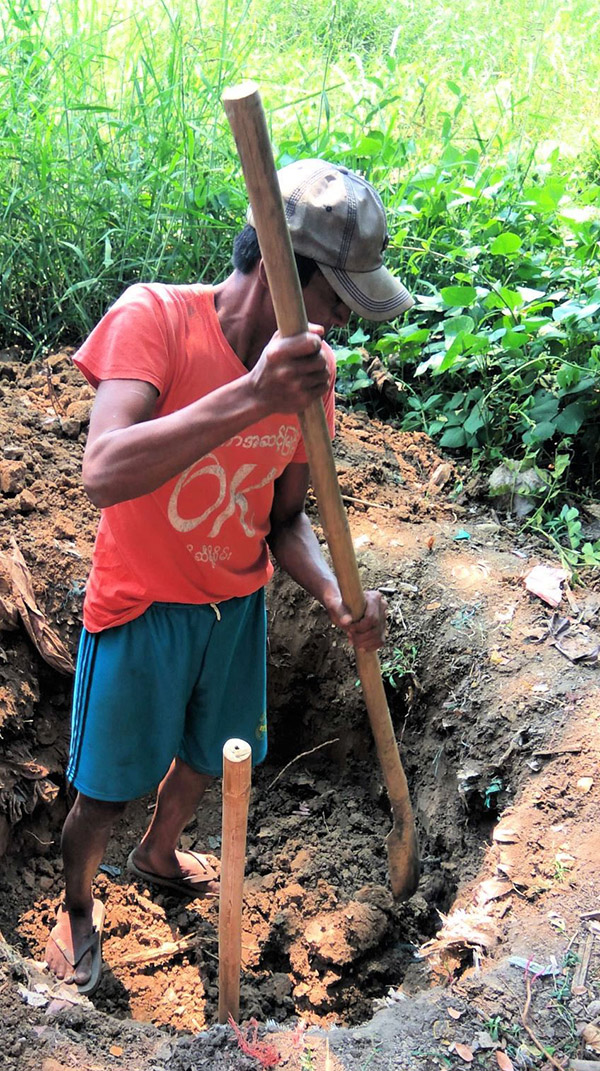Stories of Change

U Moe at work.
Doing well by doing good – a mason’s story in Myanmar
U Aung Kyaw Moe works several different jobs to make ends meet. Sometimes he works as a mason or a carpenter. Other times he works as a hair stylist! U Moe lives in Myanmar’s Ayeyarwady River delta, and he earns between $2 and $7 each day depending on the type of work he does.
In May of 2018, U Moe took the opportunity to join a short-term masonry training program that CWS organized. The workshop focused on building latrines in challenging environments, such as places that flood each year. After the week-long training course, which was led by an expert from the Centre for Affordable Water and Sanitation Technology, U Moe knew that his skills had improved considerably. This was a chance for him to earn more money, since he could now work on jobs that needed specialized skills and training.
Like the other participants, U Moe went into the workshop without knowing some of the key latrine design and placement principles. For example, a latrine should be at least 10 meters (32+ feet) away from home or school drinking water sources. Plus, the bottom of the latrine’s pit should be at least a meter higher than underground water sources.
Since the workshop, U Moe has been paid to build 26 latrines in two villages. He has used what he learned about improved design to bring quality sanitation to challenging environments like the one he and his neighbors live in. “The better-designed latrines we are now helping communities build are quite good, since they are built using five concrete rings. The old ones only used three rings, or bamboo slats around the pit and no concrete,” he explains. “Also, the new latrines’ rings rise higher than the water level during flooding.”
These two improvements alone make latrines “more durable than the type we made in the past when we dug the pit, did not line it properly, and built it at ground level,” U Moe observes. The latrines that families used to build were, in fact, quite poor. When there was flooding, the water filled the pits and raw sewage leaked out. When a family built a latrine without concrete rings, flood waters eroded the pits and collapsed the latrine. “Now, since the new latrine model is designed for areas prone to flooding, our environment is now cleaner and safer. We have to worry less about water-related illnesses,” U Moe says.
For U Moe and his neighbors, his training is a win-win. He built a new latrine for his family, meaning that they have a cleaner and safer environment. He is also helping his neighbors access better sanitation; all while earning more money thanks to these higher-paying jobs. The need for more flood-proof latrines in the area extends well beyond the 26 he has already built, so his job prospects are bright as he helps take on the challenge.
